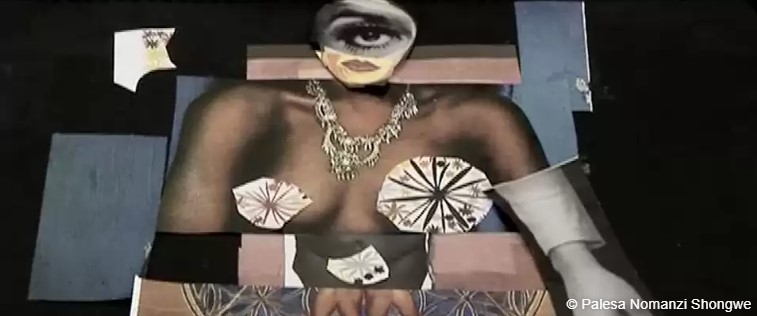FREQUENCIES – SHARING FEMINISMS
Soft silky skin glows with youthful radiance. Skin with wrinkles, lines from stories of life lived. Skin blue, bruised, beaten and punched. Skin ripped open, torn from pain. Skin stretched in birth and folded with age. Skin sown together to heal (hide) wounds. Skin hungry for desire. Skin brushed-up close in pleasure. Skin runs deep, not skin deep. The skin is surface. The cinema screen is skin.
Making The Invisible Visible or: My Touch Makes Me Visible!
My Touch Makes Me Visible! is an exploration of how filmmakers have used the skin of the screen to draw us closer to the sensory experiences of women from across different geographic terrains and from varied political contexts. My Touch Makes Me Visible! is a kaleidoscope of aesthetic forms that reflects the polyvocal positions of feminisms from different histories and various women’s experiences. The films are in conversation with each other, complementing each other, refracting against one another – to invite audiences to engage with the subjectivities women share and the differences that hold them apart. The forms of the films are each in themselves radical acts of resistance against hegemonic cinematic conventions and show how women, trans and queer filmmakers have used the camera and the power of images to reorientate the gaze away from objectification and towards a praxis of image making that is liberating. Laura U. Marks describes “haptic visuality” as a sensorial cinematic experience that is tactile and evokes memories and experiences of the body. The sense of being touched brings us close to the subjectivity of characters and their feelings and in this process implicates us as the spectators. We are drawn to these images because they remind us of our own bodies, our memories and connects us as spectators to the cultures that we embody. The programme is a statement about feelings, emotions and a commitment to the body as a site of political action, social evolution and intimate exchange where love is a transformative act.
To listen closely and to hear deeply - a dialogue-screening and performance with filmmakers, Nobunye Levin and Palesa Shongwe from South Africa who use their on-going conversation to contextualize the themes in their films. They explore love, desire and dance as forms of radical emancipatory politics and show how friendship and collaborative practices have strengthened feminist politics.
Bodies protest and resist is a multiperspective selection of films which includes the work of Hito Steyerl and Sarah Abu Abdallah to reflect patriarchal structures and the broad spectrum of violences that continue to ravage the lives of so many women globally: trauma related loss of memory in Vika Kirchenbauers work “Untitled Sequence of gaps” but also the triumphant ways that women survive in spite of these continued repressions. Sometimes it needs fiction to disappear in the sunset – even if it is “November!- in either case the film shows a variety of different formal strategies. Cinema of Senses spans the films of Friedl vom Gröller,Ulrike Zimmermann, Danielle Arbid in an explosive experience of the tactile and haptic on screen. It is a celebration of the sensual, the erotic and the sexual, not forgetting the dark parts of lust. The films are intimate reflections of how desire is imagined, the fulfillment of pleasures and the intimacies of gender fluidity. This selection invites the audience to reflect on those parts of women’s lives that have not been touched and the urgency to rediscover the body on new terms.
